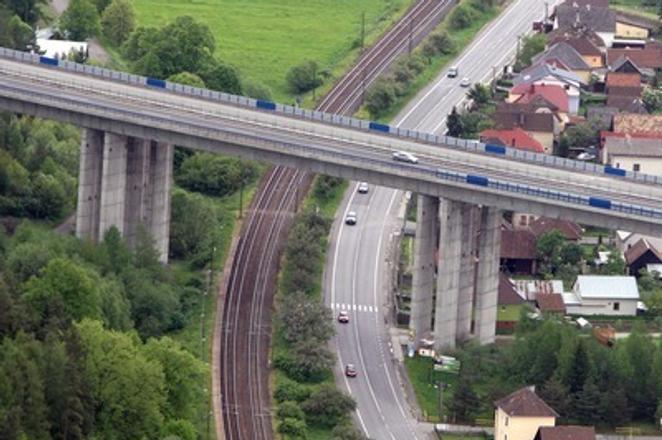The accessibility of highways or express dual-carriageways may reduce the unemployment rate in the respective districts by 0.9-1.6 percentage points.
The highways may have a bigger impact in districts with higher jobless rates, but the change is still small. Without increasing the quality of human capital, the problems of the hunger valleys cannot be effectively solved, according to the latest analysis of the Institute for Financial Policy (IFP), which runs under the Finance Ministry.
Slovakia is one of five countries with the biggest regional differences in the EU. These discrepancies present one of the biggest challenges for the country’s economy, according to IFP. One of the reasons for these differences may be the insufficient highway network, which also impacts tourism and industry, the TASR newswire reported.
IFP analysts calculated that the accessibility of highways or express dual-carriageways from the long-term view relates to reducing the unemployment rate in the district by 0.9-1.6 percentage points. They based their calculations on the proximity of the highway network to the district capital, setting the time limit to less or more than 30 minutes.
The effect of highways has become stronger in the past 10 years, as it was relatively weak before 2006. This may be linked with the arrival of foreign direct investments after 2000, when the deciding factor for companies was also the availability of highway infrastructure. In the 1990s, the spatial dynamics of the jobless rate were largely determined by the transformation of economy, IFP analysts say.
Without quality human capital, the impact of highways is weaker, the analysts said. They wrote that the connection between the accessibility of highways and the jobless rate also drops with the increase of the share of Roma population in the district. This may be linked to a less-skilled workforce in the district, which can be difficult to activate even in an improved labour market.
The highways also have the tendency to have a stronger effect on reducing the unemployment rate in more rural districts. Denser agglomerations may be the centres of job creation even without connection to the highway infrastructure, according to IFP.
The impact of the highways is strongest in areas with higher unemployment rates. Distances between a highway and district that are under 30 minutes may reduce the unemployment rate by some 12 percent, the analysts said, as reported by TASR.
They also warned that the jobless rate in a district is also impacted by the economic development of neighbouring districts. As a result, spatial effects may slightly decrease the effect of highways on the jobless rate.
Transport Minister Árpád Érsek (Most-Híd) however disagrees with the analysis, saying that the examples from abroad prove that the investors usually pick regions with well-built infrastructure.
“I cannot imagine that the companies go to the regions where roads are not finished,” he said, as quoted by TASR, adding that such analyses should be prepared by his ministry.



 D1 highway, illutsrative stock photo (source: Sme Ján Krošlák)
D1 highway, illutsrative stock photo (source: Sme Ján Krošlák)